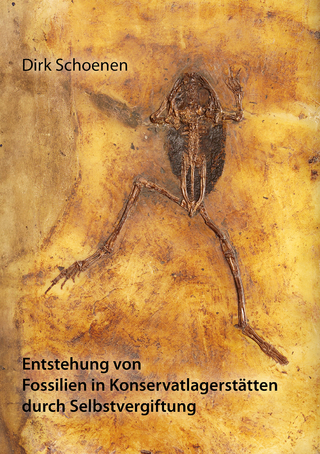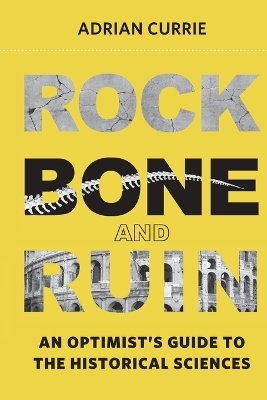
Biotic Response to Global Change
Cambridge University Press (Verlag)
978-0-521-03419-7 (ISBN)
Concern about the effects of global change on our planet's future has driven much research into the last few thousand years of earth history. In contrast, this volume takes a much longer viewpoint to provide a historical perspective to recent and future global change. Over 40 international specialists investigate the reaction of life to global environmental changes, from Cretaceous times to the turn of the century. During this time earth's climate has changed from a very warm, 'greenhouse' phase with no significant ice sheets to today's 'ice-house' world. A wide spectrum of animal, plant and protistan life is discussed, encompassing terrestrial, shallow-marine and deep-marine realms. Each chapter considers a particular taxonomic group, looking first at the general picture and then focusing on more specialized aspects such as extinctions, diversity and biogeography. This volume will form an invaluable reference for researchers and graduate students in paleontology, geology, biology, oceanography and climatology.
List of contributors; Preface; 1. Introduction Stephen J. Culver and Peter F. Rawson; 2. The Cretaceous world Andrew S. Gale; 3. The Cenozoic world Kevin T. Pickering; 4. Calcareous nannoplankton and global climate change Jackie A. Burnett, Jeremy R. Young and Paul R. Bown; 5. Phenotypic response of foraminifera to episodes of global environmental change Norman Macleod, Nievez Ortiz, Nina Fefferman, William Clyde, Christine Schulter and Jena Maclean; 6. The response of planktonic formanifera to the Late Pliocene intensification of Northern Hemisphere glaciation Mark R. Chapman; 7. The response of Cretaceous cephalopods to global change Peter F. Rawson; 8. Global change and the fossil fish record: the relevance of systematics Peter Forey; 9. Response of shallow water foraminiferal paleocommunities to global and regional environmental change Stephen J. Culver and Martin A. Buzas; 10. Intrinsic and extrinsic controls on the diversification of the Bivalvia J. Alistair Crame; 11. Global events and biotic interaction as controls on the evolution of gastropods Noel Morris and John Taylor; 12. Algal symbiosis, and the collapse and recovery of reef communities: Lazarus corals across the K-T boundary Brian R. Rosen; 13. Changes in the diversity, taxic composition and life-history patterns of echinoids over the past 145 million years Andrew B. Smith and Charlotte H. Jeffery; 14. Origin of the modern bryozoan fauna Paul D. Taylor; 15. Angiosperm diversification and Cretaceous environmental change Richard Lupia, Peter R. Crane and Scott Lidgard; 16. Cenozoic evolution of modern plant communities and vegetation Margaret E. Collinson; 17. Leaf physiognomy and climate change Robert A. Spicer; 18. Biotic response to Late Quaternary global change - the pollen record: a case study from the Upper Thames Valley, England Adrian G. Parker; 19. The Cretaceous and Cenozoic record of insects (Hexapoda) with regard to global change Andrew J. Ross, Ed A. Jarzembowski and Stephen J. Brooks; 20. The palaeoclimatological significance of Late Cenozoic Coleoptera: familiar species in very unfamiliar circumstances G. Russell Coope; 21. Amphibians, reptiles and birds: a biogeographical review Angela C. Milner, Andrew R. Milner and Susan E. Evans; 22. Paleogene mammals: crises and ecological change Jeremy J. Hooker; 23. Response of Old World terrestrial vertebrate biotas to Neogene climate change Peter J. Whybrow and Peter Andrews; 24. Mammalian response to global change in the later Quaternary of the British Isles Andrew Currant; 25. Human evolution: how an African primate became global Chris Stringer; 26. The biotic response to global change: a summary Stephen J. Culver and Peter F. Rawson; References; Index.
| Erscheint lt. Verlag | 14.12.2006 |
|---|---|
| Zusatzinfo | 14 Tables, unspecified; 9 Halftones, unspecified; 112 Line drawings, unspecified |
| Verlagsort | Cambridge |
| Sprache | englisch |
| Maße | 189 x 247 mm |
| Gewicht | 907 g |
| Themenwelt | Naturwissenschaften ► Geowissenschaften ► Mineralogie / Paläontologie |
| ISBN-10 | 0-521-03419-1 / 0521034191 |
| ISBN-13 | 978-0-521-03419-7 / 9780521034197 |
| Zustand | Neuware |
| Haben Sie eine Frage zum Produkt? |
aus dem Bereich


